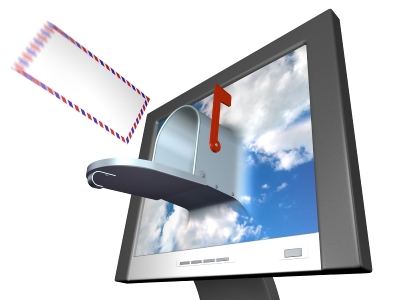You are viewing our site as an Agent, Switch Your View:
Agent | Broker Reset Filters to Default Back to List7 Keys to Email Success
May 24 2011

7 Keys to Email Success
This is a very important topic for any professional, and vital for REALTORS® in particular – so let's cut right to the chase. Here are a few rules to follow if you're using email for your business.
1) Make it personal.
Technology can offer professionals a competitive edge, but we need to be sure that it doesn't build a wall between us and our clients. In the context of email, this means you need to make an extra effort to give your communications a personal touch. Rather than writing your newsletter from the perspective of "the company," write it as you would a letter, from the perspective of an individual. Sign the letter as an individual. Include your contact information and even a headshot. This rule is particularly important for REALTORS®; for you, name and face recognition is vital.
2) Only send emails to people who actually want to receive them.
Sending unwanted emails reduces your response rate and damages your reputation among recipients. The best thing you can do to avoid this mistake is to reassess how people are being added to your subscriber list. Is there a pre-checked box on your signup form (something they may miss if they're in a hurry) or do they need to actively check the box?
3) Send targeted communications to subscribers.
Create segmented campaigns based on different users' characteristics. You can refine your segments by creating a more robust email opt-in that obtains more information from subscribers. Or, you may want to send out a survey that queries subscribers about what they are/are not interested in. For example, remember that buyers become sellers, and sellers will sell and buy again. After the transaction, keep them informed about changes in their home value. Advise them of new listings and foreclosures in their area. Don't send out general market data unless you use that to compare against their neighborhood or property type, i.e., Your home is appreciating above market pace, or, There are fewer foreclosures in your area compared to the norm, etc.
4) Get the timing right.
Think of your email subscribers as Goldilocks. Your emails can be "too infrequent," "too often," or "just right." Finding the right fit requires an intelligent, informed approach. Listen to your subscriber feedback and let that be your guide.
5) Start off on the right foot.
Your welcome message is the first communication subscribers receive from you and, if it's not engaging, it just might be the last. Make sure it's attractive (with your logo) and include a special offer that will draw them right back onto your site.
6) Pick up the phone.
Think about the emails you receive. What percentage do you read? In general, sent emails have an open rate of about 20%. If you're sending an important email, do you feel comfortable with only a 20% likelihood that the recipient will read it? That's why it's considered a best practice to follow up with a phone call after sending an important email communication.
You may also want to consider contacting clients in "surround sound" by adding a service like Ifbyphone. Ifbyphone allows users to create, manage and automate voice-based communications. REALTORS® can create lists of contacts, record messages specifically for each group of contacts, and schedule to have the message sent at a specific time. Within this recording, users can encourage contacts to "press 0 to speak to an operator now," allowing them to get in touch right away. NAR made an investment in ifbyphone; there is a free app for the iPhone that provides REALTORS® with many features, including voice broadcast. There's much more to say about Ifbyphone, so stayed tuned for a more comprehensive summary.
7) Pick the right tools.
Many REALTORS® use products and services that will automatically generate email correspondence. Look closely at the emails produced by these third parties to make sure that they're not making any of the mistakes I've just detailed. If they do make some or all of these mistakes, do some research to see if you can adjust the settings.
We recently reported on MyQuickFarm.com, a new lead generation system. In writing this article, we decided to go back and take a look at how effective these third party emails could be. We found that:
- All email communications came from a person, someone whose face and contact information were featured front-and-center.
- Emails were sent only to people who specifically opted-in.
- Each recipient received an email that was crafted specifically for them and their unique interests.
- Subscribers received a daily email (we're interested in hearing feedback about whether this is too often). Of course, there's the option to unsubscribe if a daily email is too much.
- The welcome email included a real person's name – even in the subject line.
Those are simply the basics. What are your keys to email success? Thanks to HubSpot and Marketing Sherpa for their excellent resources!
Learn more about Online Marketing.











